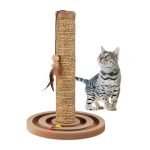Mastering Stretch Measures in MuseScore: A Comprehensive Guide
MuseScore, a popular music notation software, offers a range of features that make it easy to create and edit musical compositions. One feature that can be particularly useful is the ability to stretch measures. In this blog post, we’ll explore how to do just that.
What are Stretch Measures?
Stretch measures allow you to adjust the length of a measure in MuseScore to accommodate irregular rhythms or unusual time signatures. This feature is particularly useful when working with complex musical compositions that require precise control over note lengths and timing.
Why Use Stretch Measures?
There are several reasons why using stretch measures can be beneficial:
- Accurate representation of complex rhythms: Stretch measures allow you to accurately represent irregular rhythms or unusual time signatures in your composition, ensuring that the music is represented correctly.
- Easier editing: When working with complex compositions, having control over note lengths and timing can make editing easier and more efficient.
- Improved readability: By adjusting the length of measures to match the natural flow of the music, you can improve the overall readability of your score.
How to Stretch Measures in MuseScore
To stretch measures in MuseScore, follow these steps:
- Open your MuseScore project and select the measure you want to stretch.
- Go to the “Measure” menu at the top of the screen and click on “Stretch Measure.” This will open a dialogue box with options for stretching the measure.
- In the “Stretch Measure” dialogue box, you can adjust the length of the measure by entering a new value in the “Length” field. You can also specify whether you want to stretch or shrink the measure.
- Click “OK” to apply the changes and stretch the measure.
Tips and Tricks for Stretching Measures
Here are some tips and tricks to keep in mind when stretching measures:
- Be careful not to stretch a measure too much, as this can affect the overall timing of your composition.
- Use the “Stretch Measure” feature sparingly, as overusing it can make your score difficult to read.
- Make sure to save your project frequently while you’re working with stretched measures, in case you need to undo any changes.
Frequently Asked Questions about Stretch Measures
Here are some frequently asked questions about stretching measures:
- What is the difference between stretching and shrinking a measure? Stretching a measure increases its length, while shrinking it decreases its length.
- Can I stretch or shrink multiple measures at once? Yes, you can select multiple measures and use the “Stretch Measure” feature to adjust their lengths simultaneously.
Conclusion
In conclusion, stretching measures in MuseScore is a powerful tool that allows you to accurately represent complex rhythms and unusual time signatures. By following the steps outlined above and keeping in mind the tips and tricks provided, you can master this feature and take your music composition skills to the next level.
If you’re interested in learning more about MuseScore or want to explore other features of the software, be sure to check out the official MuseScore website and online community. There are many resources available to help you get started and improve your skills.

Best wireless earbuds cheap reddit: Are you tired of tangled cords and mediocre sound quality? Discover the best affordable wireless earbuds recommended by the Reddit community! From budget-friendly options to high-end models, we’ve got the inside scoop. Read now and upgrade your audio game!
Yi 4k sports and action camera: Are you a thrill-seeker or outdoor enthusiast looking for the perfect camera to capture your adventures? Check out our in-depth review of the Yi 4K Sports and Action Camera! With its stunning 4K video quality, this camera is sure to take your content creation to new heights. Read now and get ready to capture the action!






